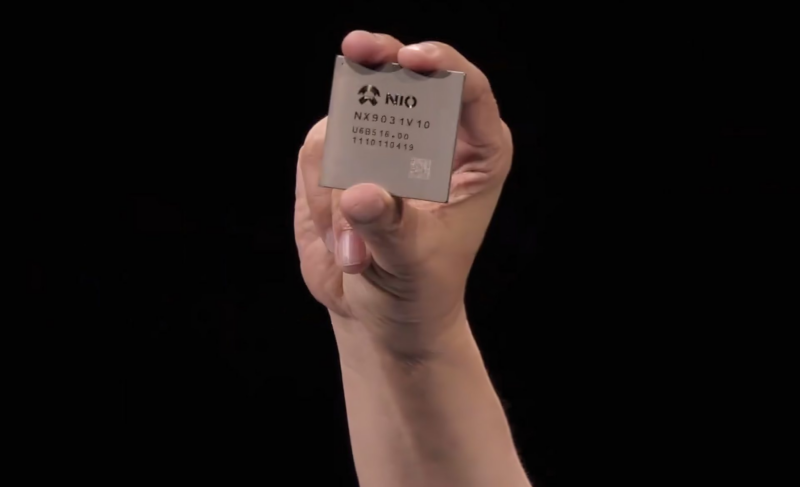Nio is set to generate revenue from one of its most significant investments as its self-developed advanced intelligent driving (AD) chip, “Shenji NX9031,” begins external technical licensing. This marks a pivotal moment for Nio, transforming a substantial R&D expenditure into a potential income stream.
Sources within the chip industry quoted by Latepost indicate that the value of such licensing agreements varies significantly. A single IP authorisation could be worth several million USD, while a system-level SoC technical authorisation could reach hundreds of millions of USD.
The Shenji NX9031 chip, developed using a 5nm automotive-grade process, boasts an actual computing power approximately four times that of Nvidia’s Orin-X. The project, initiated in 2021, involved a team of over 600 professionals covering front-end design, back-end design, verification, and testing, a scale comparable to an independent chip company. Its investment significantly surpassed concurrent projects by Xpeng and Li Auto.
Nio CEO William Li previously revealed that the R&D expenditure for the NX9031 was equivalent to the cost of building 1,000 battery swap stations. With each station estimated at 1.5 million to 3 million yuan (210 thousand to 420 thousand USD), the total R&D investment is in the billions of yuan (above 140 million USD).
Zhang Danyu, Nio’s chip division head, stated at a new car launch in May that the Shenji NX9031 underwent three years of cumulative R&D and testing. Some of its metrics surpass industry-standard chips, and its mass production commenced several months ahead of Nvidia’s latest intelligent driving chip, Thor-U. The chip is currently integrated into models such as the ET9, 2025 ES6, and EC6, with Li claiming it brings approximately 10,000 yuan (1,400 USD) in cost optimisation per vehicle.
Under immense cash flow pressure and a commitment to achieving profitability in the fourth quarter, Nio has intensified efforts to cut expenses and explore new revenue streams this year. This strategic shift underpins the commercialisation of its chip business.
In June, Nio established Anhui Shenji Technology Co., responsible for integrating chip R&D, mass production, and licensing, while maintaining absolute control. At the time, it was exclusively reported that Nio was seeking strategic investors for this entity.
Recently, Nio’s chip subsidiary has made further progress. On November 14, Anhui Shenji Technology Co., Ltd., a subsidiary of Nio, co-founded Chongqing Chuangyuan Zhihang Technology Co., Ltd. with Aixin Yuanzhi Semiconductor (Chongqing) Co., Ltd. and OmniVision Integrated Circuits (Group) Co., Ltd. The joint venture has a registered capital of 100 million yuan (14 million USD), with Aixin Yuanzhi Semiconductor holding a 36.4% stake as the largest shareholder.
Previously, on July 1, Nio Founder and Chairman William Li posted a lengthy article on his personal Weibo, stating that Nio World Model (NWM) had been progressively rolled out to the ET9, new ES6, new EC6, new ET5, and new ET5T. This signified that the application performance of Nio’s self-developed global first automotive-grade 5nm intelligent driving chip, “Shenji NX9031,” had met its design targets.
According to Li, the most advanced intelligent driving chip should possess three characteristics: sufficiently high computing power and bandwidth to support approximately 10 years of intelligent assisted driving algorithms and software technology upgrades; guaranteed safe and reliable operation under extreme conditions, supporting ultra-low latency and ultra-fast response for active and passive integrated intelligent safety; and all-weather, all-scenario image signal processing capabilities. “To achieve this goal, Nio decided in 2021 to independently develop a state-of-the-art intelligent driving chip, which was the original intention behind the Shenji NX9031 project,” Li explained.
Follow us for ev updates
